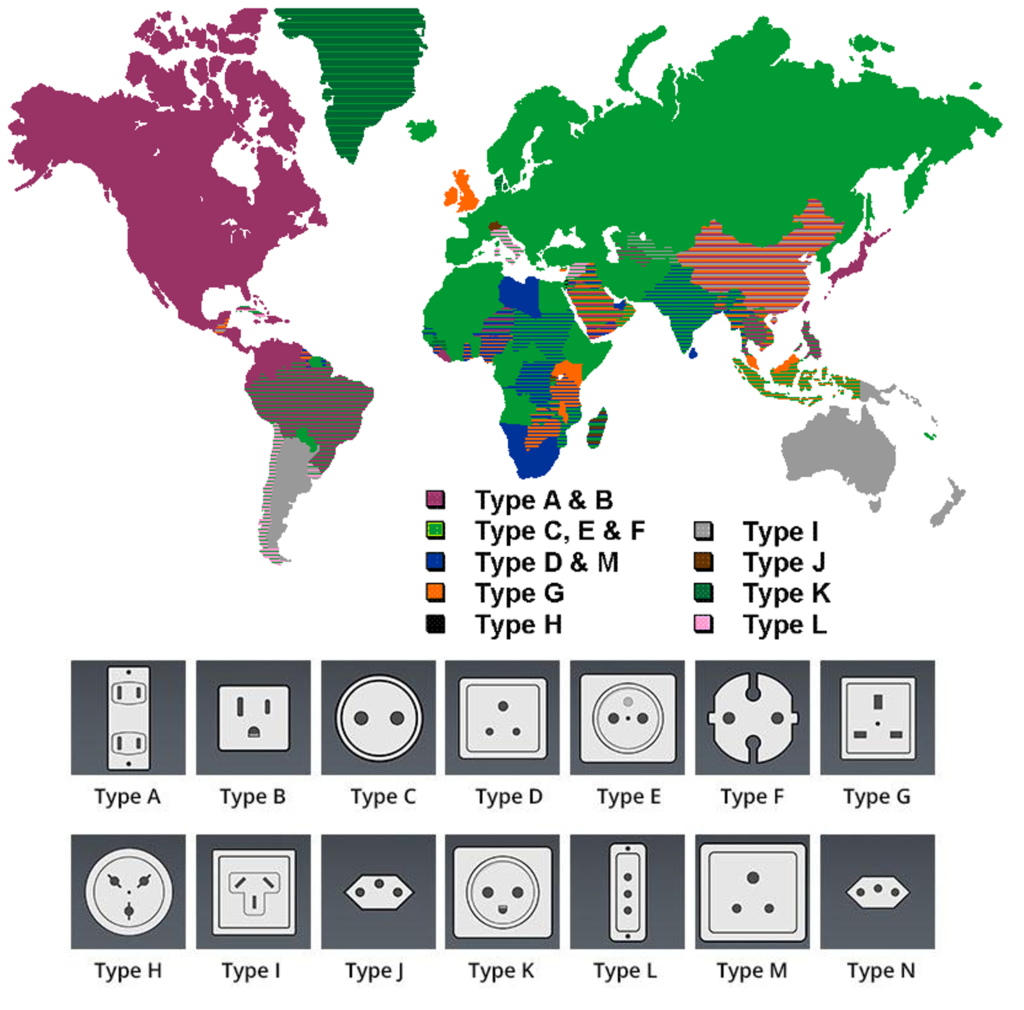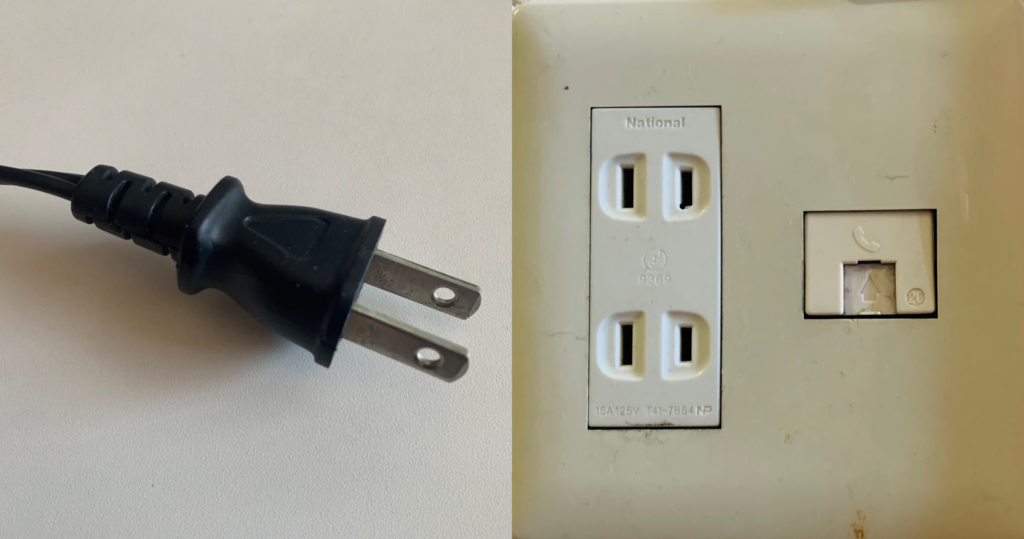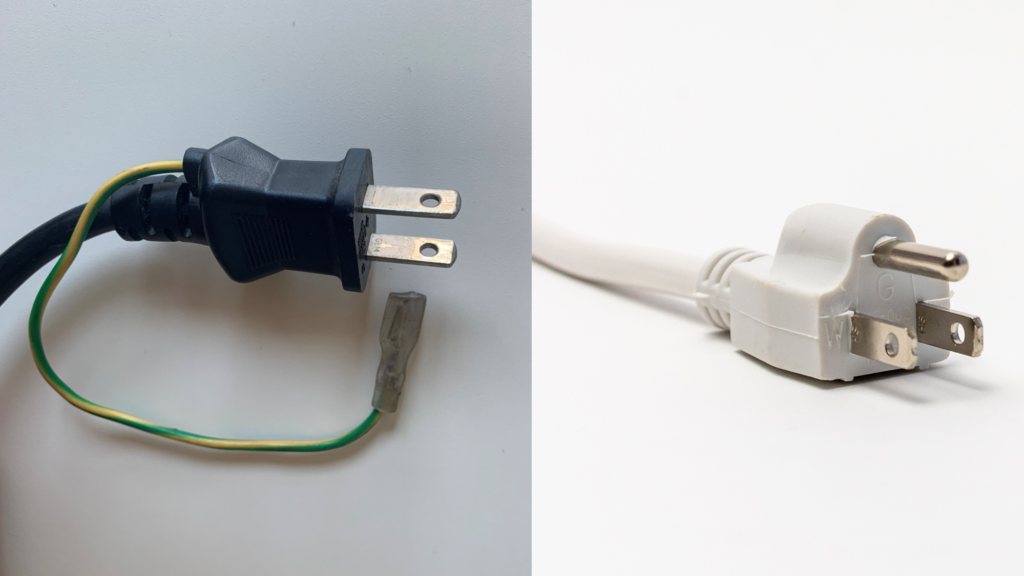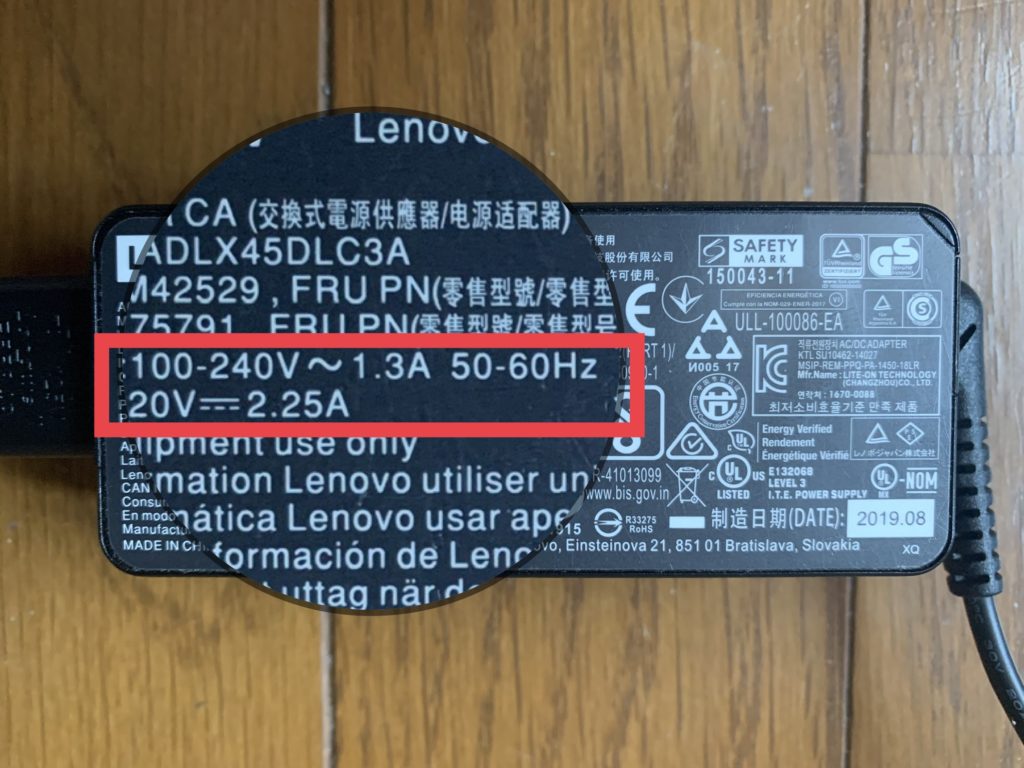There are many standard electrical sockets and plugs worldwide; each country uses different types. In this post, I will share the standard of electrical sockets and plugs in Japan.
Contents
Types of electrical sockets and plugs in use in the world
To make it easier for you to follow, a brief infographic below shows the types of electrical sockets and plugs being used in the world today.

In Japan
The infographic above shows that most electrical plugs in Japan are A and B. This plug type was invented in 1904 by Harvey Habbell II (1857-1927) and is also known as the NEMA 1-15 plug (electrical connection classification standard). The main features of this type are Two flat metal legs parallel to each other.

For type B, the third pin is a cylindrical metal rod or a semicircular section.
This pin is longer than the two flat pins to ensure the device is grounded before the other two have power. Sometimes the ground pin is replaced with a ground wire.

So when you come to Japan, you can prepare a converter, as shown below. In addition, you can also buy at convenience stores (combini) and 100 yen stores in Japan. You can also search by the keyword “Adapter travel plug” on Amazon.

Tips for using outlets and plugs with different voltages.
Electronic equipment on the Japanese market uses a voltage of 100V. Therefore, you should check whether your electronics purchased in your country, such as laptops, phones, cameras, irons, etc., can be used at 100V or not. If the product label says “INPUT: 100-240V, 50/60 Hz,” you can use it worldwide without any problems.

In addition, there are variations in the frequency of electric currents in different regions of Japan. 50 Hertz in Eastern Japan (including Tokyo, Yokohama, Tohoku, and Hokkaido). 60 Hertz in Western Japan (including Nagoya, Osaka, Kyoto, Hiroshima, Shikoku, and Kyushu). However, most devices are not affected by this frequency difference.
So what happens if the electronics are not operating at the correct voltage?
Let’s go back to Ohm’s law formula:
Power (P) = Voltage (V) x Current (I)
→ The power an electrical device consumes is determined by the voltage applied to it and the current flowing through it.
Too high a voltage source can permanently damage the electronics due to overheating (Fuse blown). On the other hand, if the voltage source is too low, the devices can still work. But the electric motor’s damage risk is very high (e.g., Refrigerators). Specifically:
- If a 110V device is plugged into a 220V power source, the wattage of the device will increase four times its original value. This is because when the voltage is doubled, and the resistance of the device remains constant, the current will also double. The power consumed by the device will therefore increase by a factor of four:
Power (new) = (Voltage (new) x Current (new)) = (2 x Voltage (old)) x (2 x Current (old)) = 4 x Power (old)
→ As a result, the device will quickly operate under overvoltage conditions. At this point, the fuse will blow, and smoke will begin to appear. The device will eventually fail due to some burned-out components. This can have serious consequences, such as fire. - In the same explanation, if a 220V device is plugged into a 110V power source, the wattage will be reduced by four times. In general, these devices will not be able to work correctly, causing low performance or even damage to the device over time. For example, the light bulb you use now will be very dim.
It’s essential always to use the correct voltage for electronic devices and to check the voltage requirements of any device before use. To ensure your electronics work properly, you should use a voltage converter or transformer to ensure the device receives the correct voltage.
References:
https://connecticuthistory.org/first-us-detachable-electric-plug-today-in-history-november-8/
http://www.voltconverter.com/what-happens-when-an-appliance-is-connected-to-improper-voltage.html



